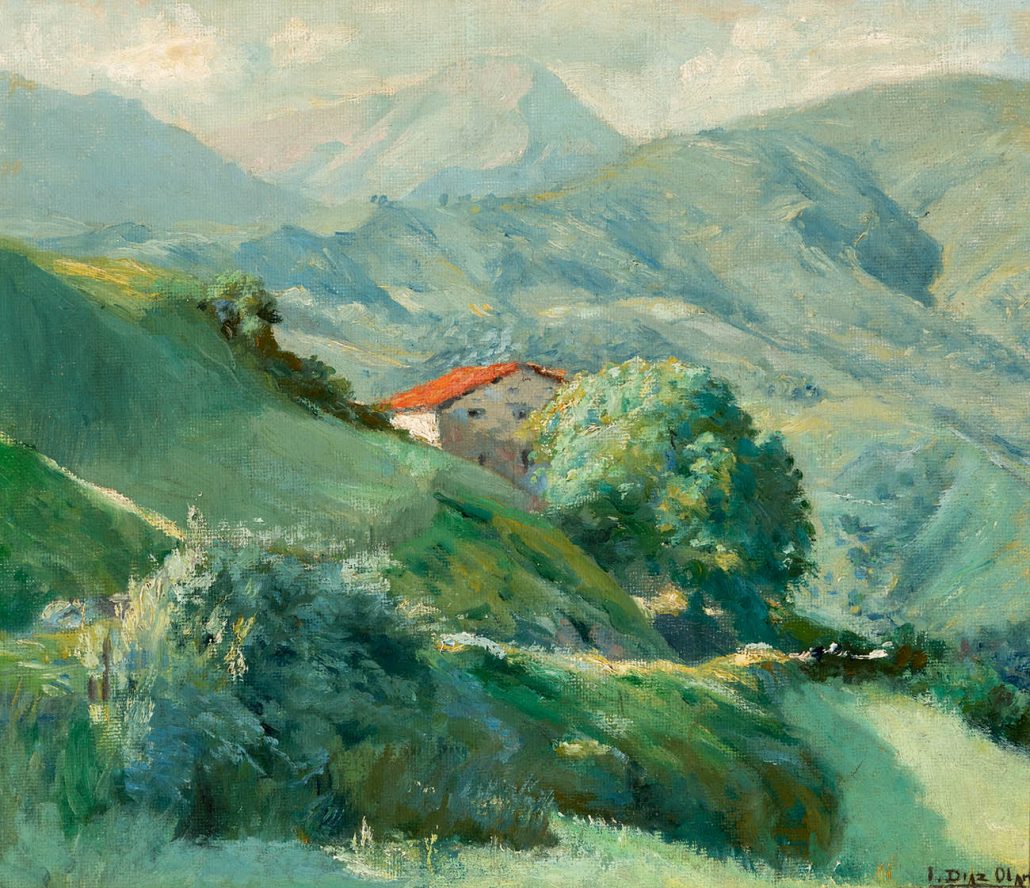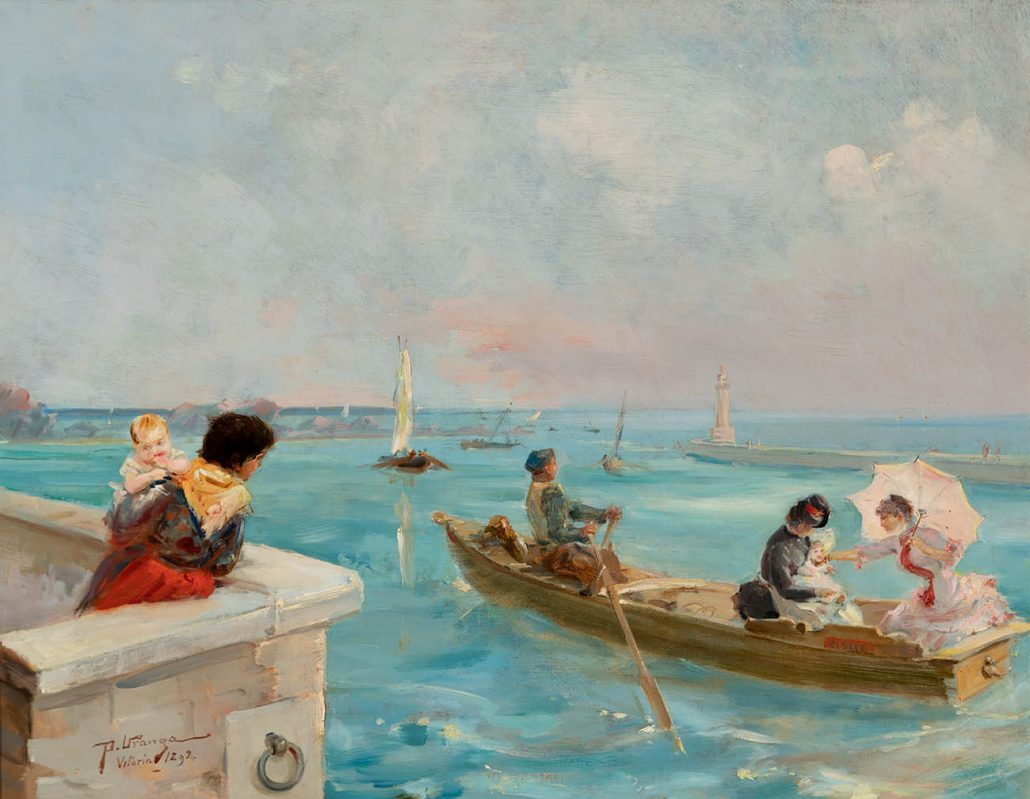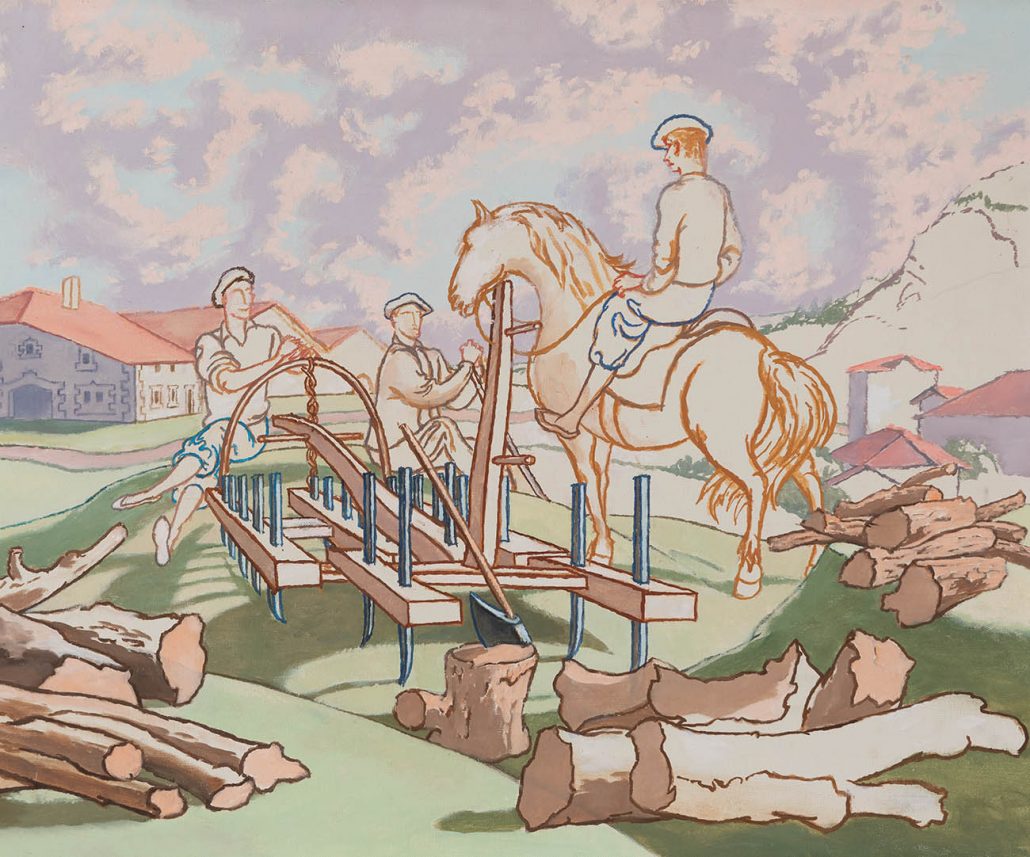The resurgence of Basque painting.
The pictorial resurgence of the Basque Country shines through in our next auction on the 30th through some of its most representative architects.
In the last decades of the 19th century, the city of Bilbao began the path that will make it one of the most outstanding cultural centers in our country. This paradigm shift in which painting will play a fundamental role will be brought about by a series of socioeconomic factors that will define the future of Basque art. Along with economic development and the creation of artistic infrastructures, the abolition of the charters gave rise to a desire to claim and preserve their own, which crystallized in painting through the theme of manners, understood as a means to create Basque art with its own entity. .
In this context, the so-called Basque school of painting was born, in which the creation in 1911 of the Basque artists association will play a decisive role. An outstanding part of its members meet in our next Basque art auction through which we can verify that, far from being united by a plastic and aesthetic specificity, the new generation of Basque painters was characterized by the use of a theme in common with a marked manners accent. In this way, the artistic resurgence of the Basque Country that began in 1833 thanks to the academic and historicist current, fully blossomed into a second generation that runs between modernity and the atavistic.
The singular character that manners acquired in the Basque scene reveals the conflict between tradition and modernity, in which the recovery of autochthonous types and customs coincided with the need to represent the new times. This conflict also transpires in the very trajectory of artists who, like Diaz Olano, belong to the classical-academic trend . While his figures manifest this classicizing spirit, his landscapes (lot 35250217 ) show a greater technical freedom that bathes with a certain bucolic air.
Despite receiving a classical training imbued in the Spanish and Italian pictorial tradition, the influence of French Impressionism will be decisive in the modern postulates of Basque painting. Likewise, the contact with symbolist painting and the harmony that they established with the generation of 98 ended up shaping the new plastic character of these artists who, despite their heterogeneity, built a feeling of their own identity through their art.
In this journey that runs between the last decades of the 19th century and the first decades of the 20th, it is worth highlighting the work of Pablo Uranga (35250212) or Ricardo Baroja, whose landscapes they perfectly combined the novelties of Impressionism with the tradition of the Spanish classical school. Within this style that fuses classicism and modernity, Aurelio Arteta played a fundamental role in the pictorial renewal of the first third of the 20th century, but also in the treatment of the female figure, which appears here as the protagonist thanks to the decisive role it played in the development of the rural world and Basque industry.
During the 20s and 30s, post-impressionist modernity continued to dominate the scene, although some of the plastic novelties of the avant-garde were introduced that, like cubism, penetrated unevenly in artists such as Ucelay (35250281), Aranoa, Nicolás Martínez (35250178) or Jenaro of Urutia.
On the other hand, the most symbolic aspect is found in the work of the Zubiaurre brothers and especially in that of Valentín, but also in that of Gustavo de Maeztu.
Undoubtedly, the idiosyncrasy of Basque painting shines through in this set of works that demonstrate the richness and character of their own land, whose most atavistic traditions have survived and coexisted with the modernity of the new times.








